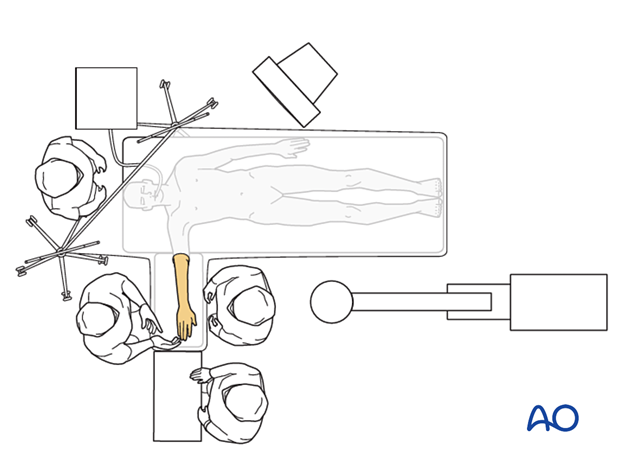Supine patient position
1. Introduction
For all surgical treatments of the distal phalanges, the patient is in a supine position with the arm on a radiolucent side table.
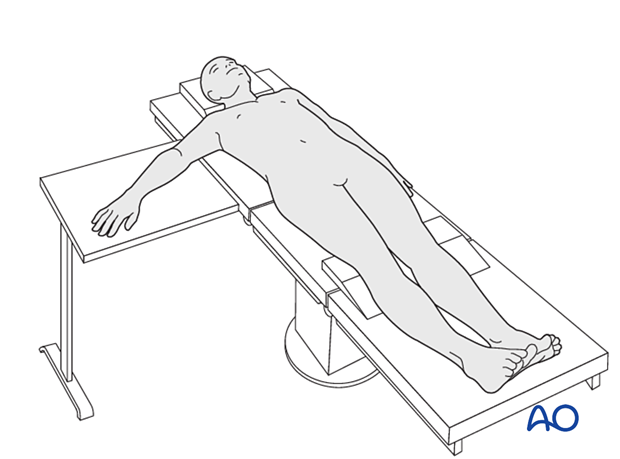
2. Preoperative preparation
For surgery, the operating surgeon needs to know:
- Details of the patient (including a signed consent form and appropriate antibiotic and thromboprophylaxis)
- Patient positioning
- Comorbidities, including allergies
- Site and side of the fracture
- Ensure that the operative site is marked
- Type of operation planned (percutaneous or open approach)
- Implants to be used
- Condition of the soft tissues
3. Anesthesia
Regional nerve block anesthesia (Oberst block, ring block) is used.
Prophylactic antibiotics are optional.
4. Patient positioning
Position the patient supine and place the forearm on the hand table.
As the hand will tend to be semisupinated, internally rotate the shoulder to allow the hand to be placed in an appropriate pronated position for a dorsal approach.
Supinate the forearm for a palmar approach.
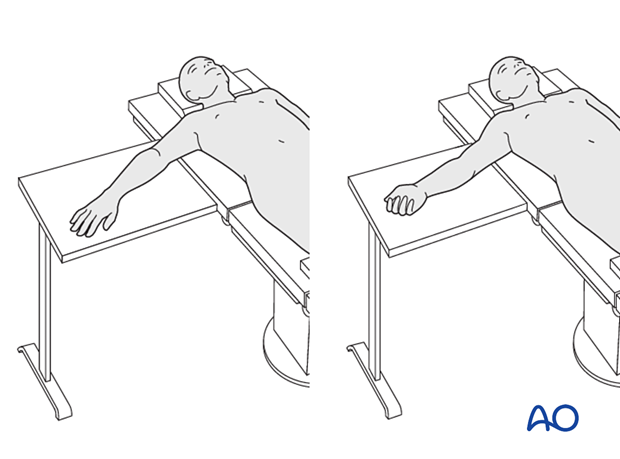
C-arm positioning
The image intensifier should be positioned to not interfere with the operating surgeon’s access to the surgical field.
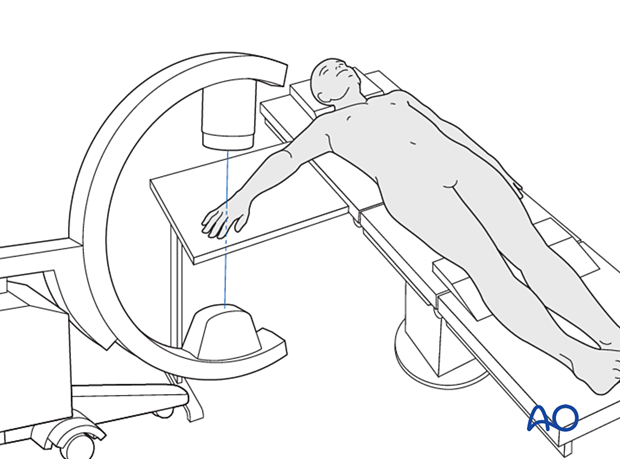
Skin disinfecting and draping
Disinfect the entire hand, wrist, and arm with the appropriate antiseptic up to the elbow.
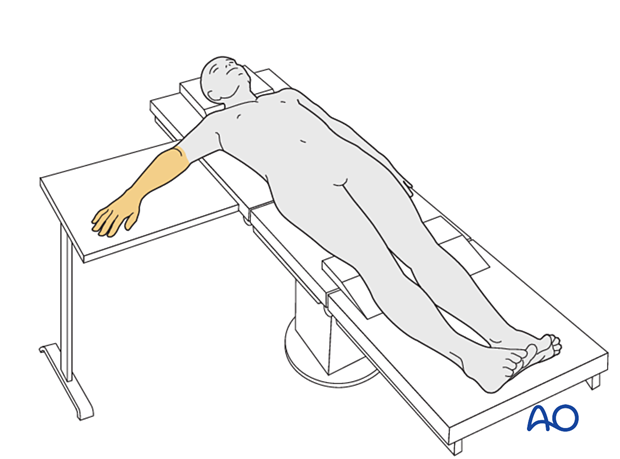
A single-use occlusive hand drape with an expandable arm opening is recommended.
Drape the image intensifier.
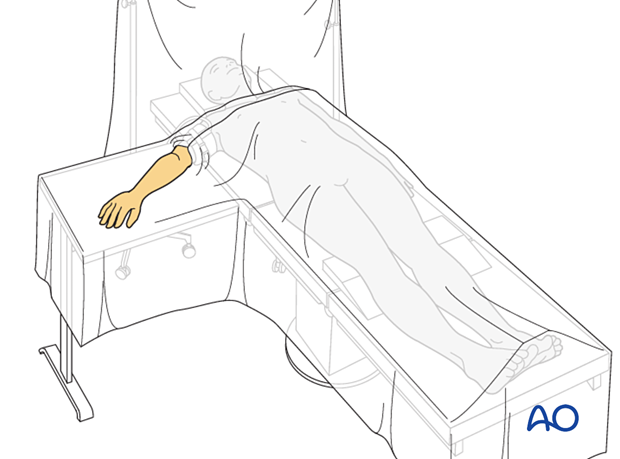
A tourniquet on the level of the proximal phalanx can be easily made by rolling up the finger of a sterile glove.
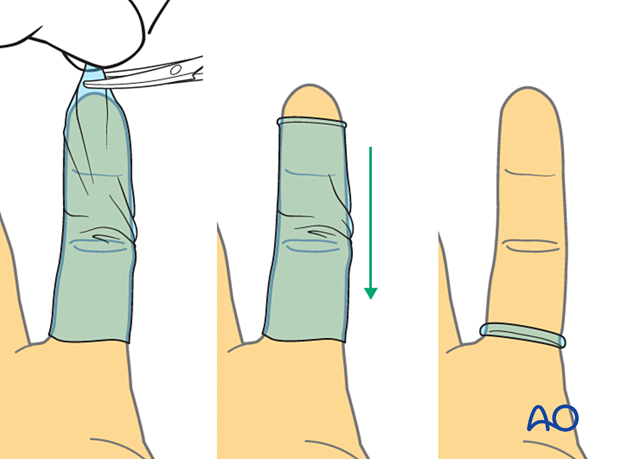
Operating room set-up
The surgeon usually sits beside the patient’s head.
The assistant sits opposite the surgeon. The ORP sits at the end of the hand table.
Place the image intensifier screen in full view of the surgical team and the radiographer.
